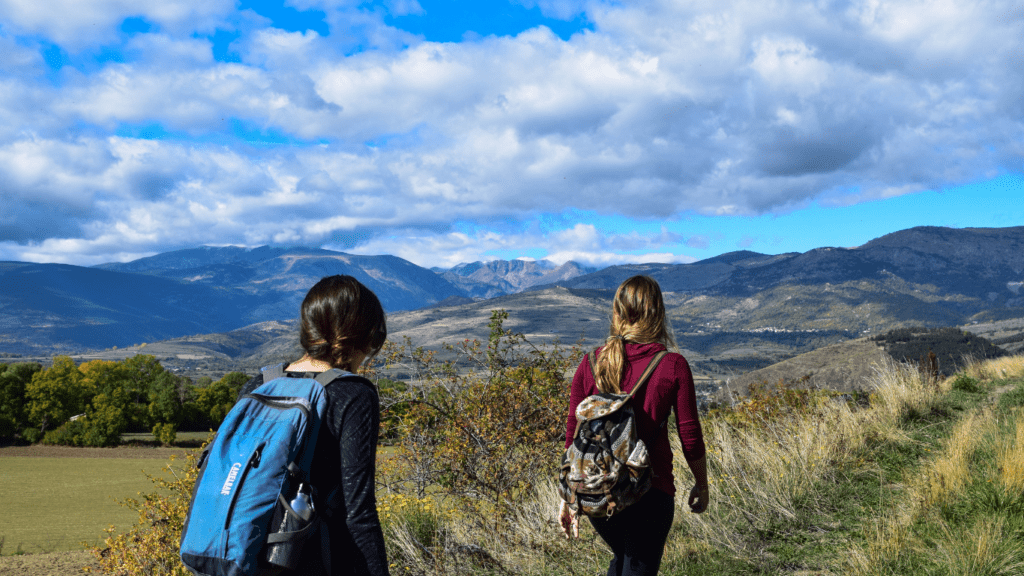Embarking on a high-elevation hiking adventure can be exhilarating, but it also comes with its own set of challenges. As someone who loves exploring the great outdoors, I understand the importance of being prepared for the effects of altitude on the body. In this article, I’ll share valuable tips and insights on how to make the most of your high-elevation hiking experience while staying safe and comfortable.
From shortness of breath to potential altitude sickness, hiking at high elevations requires a different approach compared to lower-altitude treks. Through my own experiences and research, I’ve gathered practical advice that can help you acclimate better, stay hydrated, and enjoy the stunning views without feeling overwhelmed by the altitude. Whether you’re a seasoned hiker or new to high-elevation trails, these tips will be invaluable for your next mountain adventure.
Understanding High Elevations
Acclimating to high elevations is crucial when embarking on a mountain adventure. Being aware of how altitude affects the body can help in better preparation for the challenges ahead. At higher elevations, the air becomes thinner, containing less oxygen molecules, which can lead to altitude-related illnesses if not managed properly.
Staying hydrated at high elevations is essential to combat the increased rate of water vapor lost through respiration due to lower air pressure. It’s vital to drink water regularly, even if you don’t feel thirsty, to prevent dehydration, a common issue at high altitudes that can exacerbate altitude sickness symptoms.
Understanding the impact of high altitudes on your body is key to enjoying a safe and fulfilling hiking experience. By acclimating properly, staying hydrated, and being mindful of altitude-related challenges, you can make the most of your high-elevation trek and savor the breathtaking vistas along the way.
Preparing for High-Elevation Hiking
When gearing up for high-elevation hiking, acclimatization plays a crucial role in ensuring a safe journey. It’s vital to adjust gradually to the altitude to reduce the risk of altitude sickness. I remember starting my hikes at lower elevations and gradually making my way up to higher altitudes to acclimate effectively.
Acclimatization
Acclimatization involves allowing your body time to adjust to the reduced oxygen levels at higher elevations. It’s essential to pace yourself and take breaks as needed to give your body a chance to adapt. I found that taking short walks around the base camp before embarking on longer hikes helped me acclimatize better.
Hydration and Nutrition
Staying hydrated is key when hiking at high elevations to combat the effects of increased water vapor loss through respiration. I always carry a reusable water bottle and drink small amounts regularly. Additionally, maintaining a balanced diet rich in carbohydrates, proteins, and healthy fats aids in sustaining energy levels during the hike. Packing nutrient-dense snacks like nuts, dried fruits, and granola bars is a smart choice for fueling your adventure.
Safety Measures for High-Altitude Trekking
Ensuring safety during high-altitude trekking is paramount for a successful hiking adventure. Here are some key safety measures to consider when embarking on a high-elevation journey:
- Gradual Ascent: I recommend gradually ascending to higher altitudes to allow your body to acclimatize effectively. Rapid ascents can increase the risk of altitude sickness, so it’s essential to pace yourself and give your body time to adjust.
- Altitude Awareness: Being aware of the signs and symptoms of altitude sickness is crucial. Symptoms such as headaches, dizziness, nausea, and fatigue should not be ignored. If you experience any of these symptoms, it’s important to descend to a lower altitude immediately.
- First Aid Kit: Carrying a well-stocked first aid kit is vital for any hiking trip, especially at high altitudes where medical help may not be readily available. Include supplies for treating altitude sickness, minor injuries, and other common ailments.
- Weather Watch: Keep a close eye on the weather forecast before and during your hike. Weather conditions can change rapidly at high elevations, so being prepared for sudden changes in temperature, wind, or storms is essential for your safety.
- Emergency Communication: It’s important to have a reliable means of communication in case of emergencies. Carry a charged cell phone, a portable charger, and consider investing in a satellite phone or emergency locator device for remote areas.
- Buddy System: Hiking with a companion or in a group can enhance safety during high-altitude treks. Look out for each other, share supplies and responsibilities, and provide support in case of emergencies.
By following these safety measures and being prepared for potential challenges, you can enjoy a safe and memorable high-altitude hiking experience while taking in the breathtaking views along the way.
Essential Gear for High-Elevation Hiking
When embarking on high-elevation hiking expeditions, having the right gear is crucial for an enjoyable and safe experience. Here are the essential items that I recommend packing for your high-altitude trek:
- Layered Clothing: Ensuring you have a layered clothing system is key to regulating body temperature in changing high-altitude conditions. Pack moisture-wicking base layers, insulating mid-layers, and a waterproof and windproof outer layer.
- Sturdy Hiking Boots: Invest in a pair of sturdy hiking boots with good ankle support and a grippy sole to navigate rugged terrain and prevent slips and falls.
- Sun Protection: At higher altitudes, the sun’s rays are stronger, so don’t forget to pack sunglasses, a wide-brimmed hat, and sunscreen with a high SPF to protect your skin from sunburn.
- Navigation Tools: Carry a detailed topographic map of the area, a compass, and a GPS device to stay on course, especially in remote and challenging high-altitude environments.
- Headlamp/Flashlight: As lighting conditions can change rapidly in mountainous regions, having a reliable headlamp or flashlight is essential for navigating trails in low-light situations.
- First Aid Kit: Pack a well-stocked first aid kit containing essentials such as bandages, antiseptic wipes, pain relievers, blister treatment, and any personal medications you may need.
- Emergency Shelter: In case of unforeseen circumstances or sudden changes in weather, carry a lightweight emergency shelter, such as a tent or a bivy sack, to provide protection from the elements.
- Hydration System: Stay hydrated at high altitudes by carrying an ample supply of water or using a hydration system like a hydration bladder or water bottles to ensure easy access to fluids during your hike.
- Nutritious Snacks: Pack lightweight, high-energy snacks like nuts, dried fruits, energy bars, and jerky to fuel your body and maintain energy levels during your high-altitude hike.
By equipping yourself with the right gear for high-elevation hiking, you can enhance your safety, comfort, and overall hiking experience while exploring the breathtaking landscapes of elevated terrains.



 Dominic Reed brings his extensive experience in outdoor survival and adventure sports to Terra Tactician Tactics, where he plays a crucial role in the platform's development. With a background in outdoor education and a deep love for wilderness exploration, Dominic is committed to creating content that inspires and informs readers. He specializes in writing articles on survival skills, advanced camping techniques, and gear recommendations, drawing from his own adventures and hands-on expertise. Dominic's practical approach and engaging storytelling help readers prepare for their outdoor pursuits, ensuring they are well-equipped for whatever nature throws their way.
In addition to his writing, Dominic actively collaborates with the team to expand the platform's reach and impact. He is passionate about connecting with the outdoor community and sharing his knowledge with those eager to learn more about survival tactics and adventure sports. His contributions have been instrumental in positioning Terra Tactician Tactics as a go-to resource for enthusiasts seeking to elevate their outdoor experiences. Dominic's dedication to the project is driven by his belief in the transformative power of nature and his desire to help others develop a deeper connection to the wild.
Dominic Reed brings his extensive experience in outdoor survival and adventure sports to Terra Tactician Tactics, where he plays a crucial role in the platform's development. With a background in outdoor education and a deep love for wilderness exploration, Dominic is committed to creating content that inspires and informs readers. He specializes in writing articles on survival skills, advanced camping techniques, and gear recommendations, drawing from his own adventures and hands-on expertise. Dominic's practical approach and engaging storytelling help readers prepare for their outdoor pursuits, ensuring they are well-equipped for whatever nature throws their way.
In addition to his writing, Dominic actively collaborates with the team to expand the platform's reach and impact. He is passionate about connecting with the outdoor community and sharing his knowledge with those eager to learn more about survival tactics and adventure sports. His contributions have been instrumental in positioning Terra Tactician Tactics as a go-to resource for enthusiasts seeking to elevate their outdoor experiences. Dominic's dedication to the project is driven by his belief in the transformative power of nature and his desire to help others develop a deeper connection to the wild.